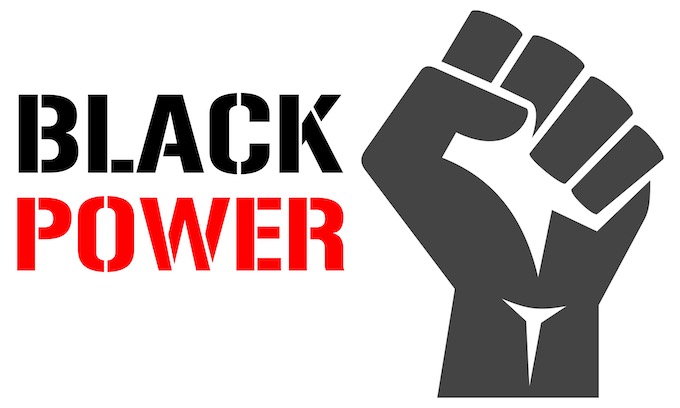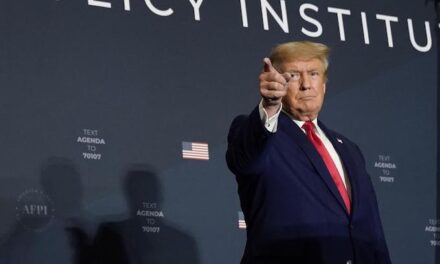Tiffany Carter moved back to her hometown of San Francisco five years ago to start her own business.
What she found upon her return to the Bayview was a neighborhood in transition, the kind that pushes Black people out in order to make space for wealthier newcomers, many of them white.
“I noticed the gentrification, us not being in our neighborhoods and not being able to hold space,” Carter said. “That’s what started everything.”
When Carter says “everything,” she means SF Black Wallstreet, a grassroots organization she co-founded along with six other San Francisco natives in June 2020.
What started as a relatively spontaneous gathering of community members to celebrate Juneteenth has turned into a powerful movement to help Black residents build wealth, reclaim spaces they’ve been forced to leave and spread the culture and influence of the community into new corners of The City.
“We would like to be here, and we are going to be here, and we are going to fight to be here and claim our stake,” said Gwendolyn Brown, another of the co-founders. “We are going to encourage, promote and support Black businesses doing business outside of historically Black neighborhoods.”
Back in 1970, Black residents accounted for about 13 percent of San Francisco’s total population. That number has since dropped to roughly 5 percent as many families have been displaced by gentrification, sky-high costs of living and the 1970s redevelopment efforts that demolished their homes and businesses in neighborhoods such as the Fillmore.
“But we are here,” Carter emphasizes. She said the narrative that there are no Black people in San Francisco disrespects the diverse community and its contribution.
One of the primary goals of Black Wallstreet is to boost the number of Black San Franciscans, in part by creating vibrant corridors and opportunities that incentivize people to return.
“The strategy is to get more people to come back to San Francisco for the same reasons that everyone comes to San Francisco,” Brown said. “What we would love to see and what we are working towards is getting Black people into homes in San Francisco, not just in those homes but inhabiting the space.”
That means giving people the tools and the know-how they need to purchase homes and start their own businesses. Over the course of the pandemic, the organization has hosted virtual workshops led by Black business leaders and industry experts on topics such as stock market investment, mortgage options and personal finance — conversations that often exclude communities of color.
“We invest a lot so that our people are able to interpret the information when it’s coming from people that sound like us and look like us,” Carter said.
There’s a very real relationship between having the ability to buy a home or run a business and building generational wealth that can lift an entire family up for years to come.
“You can’t build equity through rent. You can’t build wealth through rent,” said Shakirah Simley, executive director of the Booker T. Washington Community Services Center, a storied community center and housing facility. “Buying a home is a nest egg, and that opportunity has simply been denied to Black Americans for centuries.”
The average median income of a Black household in San Francisco is about $31,000. By comparison, it’s about $110,000 for white families, according to the most recently available U.S. Census data.
Addressing that wealth gap is essential, but so too is dismantling the systems that have perpetuated that inequity in the first place such as redlining, segregationist transportation systems and perpetual disinvestment in education, health care and other social services.
“Our American economic and agricultural systems are built off of Black labor, and Black people have never been able to reclaim the fruits of their labor,” Simley said. “It is not a matter of individual choice. It’s a matter of systemic policy violence.”
To that end, SF Black Wallstreet plans to unveil a new program in October that will provide technical assistance and financial resources to aspiring Black small business owners. It will also eventually dedicate funds toward creative ways to bring these merchants to a wider range of customers without having to pay the steep rent required of a traditional storefront, such as flea markets or outdoor pop-up booths.
The Black Millionaire Development Program will focus on getting people set to run e-commerce operations and ensuring they can sell their wares online. Doing so will allow them to grow their reach and generate more profits that could ideally be used to open or expand their presence on city streets.
Additionally, the initiative will kick off the launch of Black Millionaire Mile on Innis Avenue, where SF Black Wallstreet has its brick-and-mortar office that eventually will serve as an in-person resource hub.
“There is no business without the space to do your business,” Carter said of the importance of setting aside a physical location to bring people together.
Another primary goal of the group is to achieve what it calls “spatial justice,” or the reclamation of places and spaces that used to be thriving pillars of Black San Francisco.
“Our generation is saying I can’t do anything about making you feel uncomfortable,” Brown said. “It’s an act of rebellion, in a sense, by saying I’m going to be here now so what are you going to do?”
SF Black Wallstreet organizes regular events and gatherings such as block parties and outdoor brunches at India Basin Shoreline Park to bring people out into the streets, support businesses on local commercial corridors and celebrate Black culture through food, art, history and more.
It wants to remind people that this is home, and show Black San Franciscans who remain in The City, as well as those who have left, that this is a safe, vibrant place for them to come.
“That’s therapeutic for all of us,” Carter said. “We are bringing so much joy to our community. We are creating Black traditions in San Francisco. We are entitled to enjoy it as much as anyone else.”
Black Wallstreet isn’t the only organization doing this kind of work in San Francisco.
For decades, people within communities have provided their own networks of support to one another, and they’ve long worked to advocate for their own needs to those with power.
But the combination of the pandemic and the murder of George Floyd helped formalize the coalitions, regardless of other differences, and empowered them to make direct demands of local officials and other stakeholders.
“Our futures are wrapped up in each other’s,” said Simley, who is also a member of MegaBlack SF, a group that fights for resources, reparations and an end to discrimination. “That kind of solidarity is something that is extremely powerful and is the galvanizing point for all of us.”
Together, these groups have made significant strides. They lobbied for the Dreamkeeper Initiative, a $120 million allocation of funds away from law enforcement toward community resources; sparked the creation of a reparations task force; and have been instrumental in holding local elected officials accountable to promises that they will fight for change.
Still, there are decades of harm to be undone, and groups like these will continue to lead that work.
“We can’t save Black San Francisco without saving all of San Francisco,” Carter said.
© 2021 San Francisco Examiner. All rights reserved.
—-
This content is published through a licensing agreement with Acquire Media using its NewsEdge technology.



















You read this article and you would think that America is the most oppressive place in the world—especially for Blacks. And yet, the evidence abounds to the contrary.
Because the Democrat Part promotes, encourages and supports racism just like the democrat Party promotes, encourages and supports illegal immigrants. For the purpose of dividing the U.S.A and attempting to make the U.S.A. into a Socialist Democrat Party Dictator State.
The traitorous Democrat Party will do ANYTHING to make the people dependent on the government for everything.
The “Socialist Democrat Party State” political officers, Gestapo, Woke and Cancel Culture are just getting started.
You will obey, be loyal and support the “Socialist Democrat Party State” or you will be classified as
“Enemies of the State”.
24 Aug. 2020 – Monday on MSNBC’s “Live,” House Speaker Nancy Pelosi (D-CA)
referred to President Donald Trump and his Republican supporters as
“domestic enemies” and “enemies of the State”.
And unfortunately, all too often, the minorities in this nation, BUY INTO THEIR LIES, hook line and sinker.
Blacks have the deck stacked in their favor so much that if they aren’t ALL millionaires, they’re ALL failures. Just think if whites had the deck stacked like that what we’d be. There should be an equal entity for each black organization: White history month, white caucus, white wallstreet, white business leaders, white neighborhoods, etc.
Add to that, with literally DOZENS UPON DOZENS of scholarship opportunities for BLACKS ONLY to go to college, you’d think MORE WOULD BE IN schools, earning degrees. BUT WHEN YOU SEE that blacks as a whole, have one of the HIGHEST HIGH SCHOOL drop out rates of any ethnicity, its not surprising to see so few in ‘upper education’, that’s NOT SPORTS Related.
Why would anyone want to live in San Francisco, with all of the crime there and nothing is done about it. Let’s face it California is a sewer of liberalism and the rot of liberalism makes sewers out of civilized society.